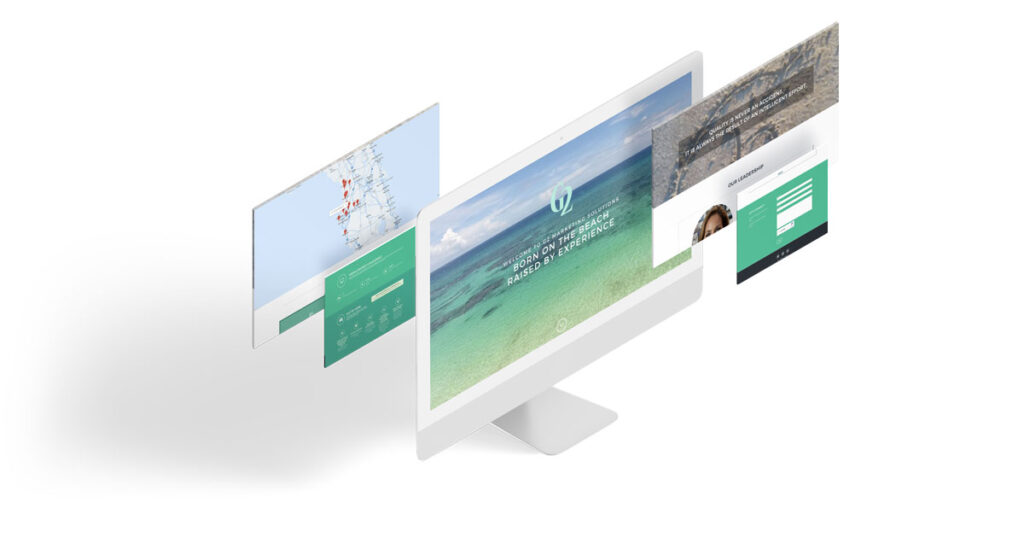It’s time. You’ve finally decided to set up a professional website for your business or decided it’s time for an update after a few years. There are many key reasons why a professional website is crucial for a business, and you can read about them our previous article. The benefits of a website for a small business are multi-faceted, and in 2020 it is more important than ever to have an outstanding digital presence.
Since a website is the online face of your business, getting it right can mean the difference between lagging behind or gaining an edge on your competitors. Working with a web designer allows you to create a standout website that is optimized for your target audience. What are the essential factors that go into designing a website?
Purpose
The design process will always begin by unraveling the purpose of the project. There is no point in having flashy graphics if they don’t have a goal in mind. A designer should first learn more about your business to get a good understanding of what your present customer base looks like and the type of customer that you are targeting in the future. This is also the chance to discuss any issues with a current site and how they could be improved.
To better serve your prospects and customers, your website must have a purpose and you must have a plan.
A well-designed website is more than just a flashy presentation of your business. It brings through visitors, provides them with information, helps them to better understand your product/service, and allows them to directly interact with your brand. Every single element of a professional website should be geared towards a specific purpose.
Identifying Goals
Goal identification will seek to find out what the primary aim of the professional website is. Is it to inform or to entertain? Will there be a specific branding strategy that will be utilized? These are some of the questions that will need to be answered. For inspiration, try looking at competitors’ websites and pick out the elements they utilize well. On top of that, it can be worthwhile to write out the goals in a simple paragraph and be reminded of them throughout the process. A website without a clear purpose is one that will not be able to achieve the goals of a business.

Research
Once the purpose is identified, the next step will involve research. It is important for business owners and designers to remain on the same page, which requires consistent communication. A designer can help to ensure that every single detail on all of the web pages serves a purpose. Research will involve figuring what works best and what doesn’t for targeting your specific audience.
Using a mood board is a great way to show your vision. They can express an idea much faster than words.
It is also important to figure out a visual style that represents the brand in the best way. Mood boards and collage styles can be helpful in this process to portray how the site should feel visually. A sitemap will also need to be worked on to see how the different pages of the website will interact. You can think of this as the core blueprint for the website.
Wireframe
After the sitemap, a wireframe will be created that shows the basic elements of each page. It won’t have any complex or finalized design elements, but will include a simple guide for how the final website will look. Wireframes can guide the designers for adding new elements, and allows business owners to see the core functions of the website. It will also confirm that both parties are on the same page.

Prototype
As soon as the pages are completed, it will be time to view a prototype. This is a mockup of the live website, which allows you to get a feel of the aesthetic and functionality. The prototype will typically show you the desktop and the mobile-friendly version of the website. An in-depth customer perspective will be required to gauge whether the website meets all of the purposes that were set out.
This is the time where tweaks and optimizations can be applied to ensure that the customer is able to have the best experience. Additionally, the basics of a lead generation system can begin to be worked out. A basic sales funnel will set your business up to gain more ideal clients in the long-run. 96% of your visitors won’t be ready to purchase on their first visit, which makes it essential to prepare and build an engaging sales funnel that turns leads into sales.
Content Creation
As well as the design of the webpages, the words are also just as important. Copywriting for webpages allows a business to interact with visitors. Relevant and concise content gives users the best idea of what a business is about and grants them clear reasoning for why they should utilize the product/service. Additionally, content must be optimized for SEO so that relevant search terms are organically included. This will allow users to find the website through web searches. Content needs to complement the design, as these two elements go hand in hand.

Getting Your Site Live
After all the hard work that goes into designing a professional website, there is nothing quite like the satisfaction of seeing your site live for the first time. This is where the domain and the hosting provider come into play. There are a variety of packages to choose from, and it is important to discuss your specific needs with a designer.
When your site is live, customers can start to visit it and, in turn, start entering your sales funnel. Have no fear because even after a site is live, changes can still be made. Actually, it is important to continually optimize a website for both SEO and lead generation. The online landscape is constantly changing, which makes it vital to stay ahead of the curve.
Once the site is live, it is time to engage in a launch strategy. This means having the launch well-prepared in advance and sending out communications. Let the world know about your website through advertising and social media networks.
Using a Site-Builder
Rather than using a designer, there is also the option of using a site-builder such as Wix and Squarespace. You can find a variety of small business website templates on these site-builders. The advantage of using these websites is that they are cheaper and fairly easy to use, even for those who are not the most digitally savvy. This could be a great starting off point or interim website.
Although, it is no wonder that when businesses go down this route, they end up with a rather generic-looking website. It is the best option for those looking to create a business website for free or cheap, but at the end of the day, you get what you pay for. With competition in your industry, being able to stand out is a key asset. Website builders only give basic templates, whereas a designer can start from scratch and match your business identity with the identity of a website.
Closing Thoughts
Designing a professional website is certainly not easy, but all that effort and investment is worth it in the long-run. A well-optimized website will pay for itself through the years of growth that a business is likely to have. If you want a stunning website designed for your business, a designer is the way to go. If you need a simple website fast, a site builder is for you.
Don’t know any designers? Feel free to contact us! We work closely with businesses, just like yours, to get to know their identity. This fuels our creative process, and the end result is a tailored website that an owner can be proud to call the online face of their business.

